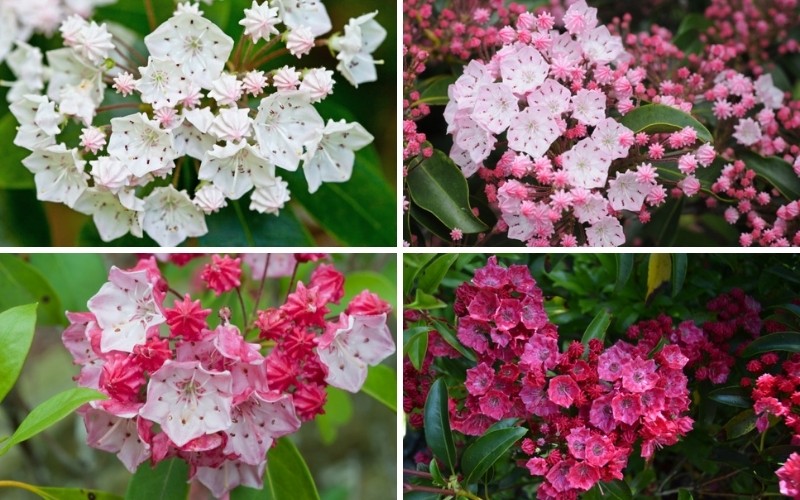
The mountain laurel (Kalmia latifolia) is a gorgeous shrub that can sometimes grow tall enough to be trained as a small tree. It grows throughout the eastern half of the United States, mainly in cool areas in moist soil. The plant in general doesn’t need much water – living in areas where soil tends to be moist does help – and it needs to be in partly shady areas. This is a good plant to have if part of your yard is near a water feature like a stream or if you have a shady spot that doesn’t dry off as quickly after rain or from morning condensation. It can grow to about 15 to 20 feet tall and prefers acidic soil.
The blossoms of mountain laurel form five-sided, cuplike blooms that grow in clusters. The colors can range from white to blush to red and are often two-toned, with interesting markings throughout the blossom.
Three things to keep in mind with mountain laurel are that 1. it’s toxic if ingested, 2. it’s flammable, and 3. another plant, Texas mountain laurel (Sophora secundiflora) shares a common name with Kalmia.
All parts of mountain laurel are toxic when ingested, so do not plant this in areas where young children or the family pets can get to it. Young kids who are in the “everything goes in the mouth” stage may become very sick even if they just put a leaf in their mouth.
Do not plant mountain laurel near structures that can burn. This is not a good plant for any defensible space area around your property. Plant it away from your house.
As for Texas mountain laurel, more detail follows, along with descriptions of popular cultivars of Kalmia.
1. Dwarf mountain laurels Kalmia latifolia ‘Elf’ and K. latifolia ‘Minuet’
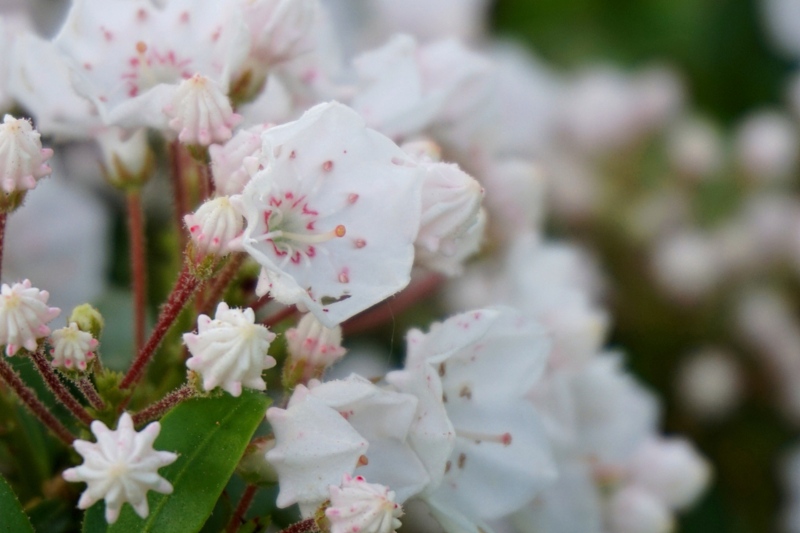
‘Elf’ was the first dwarf variety of mountain laurel to be introduced, and both it and ‘Minuet’ grow to no more than 3 feet tall. ‘Elf’ can spread out to about 4 feet wide and offers white blossoms with red markings; ‘Minuet’ spreads only 3 feet but displays showy flowers that are light pink with a darker red band and lines inside the blossom. Both are good for zones 5-9.
2. K. latifolia ‘Sarah’

‘Sarah’ is a spring bloomer that produces gorgeous arrays of dark pink, red, or orange flowers that turn lighter closer in toward the center of the blossom. The almost ombre color change is in contrast to the clear-cut lines that mark other mountain laurel blossoms. It needs partial shade with direct sunlight limited to no more than 6 hours per day. It’s resistant to deer and rabbits and is good for hedge plantings as it reaches 4 to 5 feet in height.
3. K. latifolia ‘Olympic Fire’
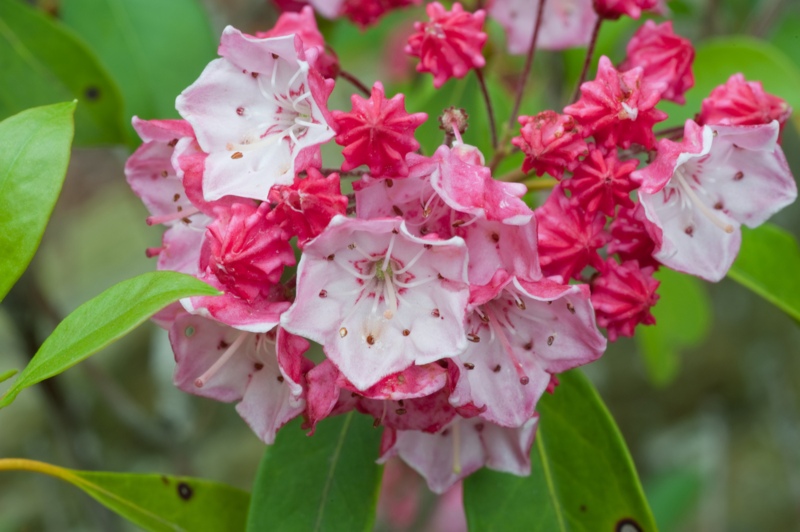
Medium-pink blossoms with few interior markings populate this variety in late spring and early summer. It attracts butterflies and can grow to between 5 to 10 feet tall. It grows at a fairly moderate pace; other mountain laurels may grow more slowly.
4. K. latifolia ‘Peppermint’
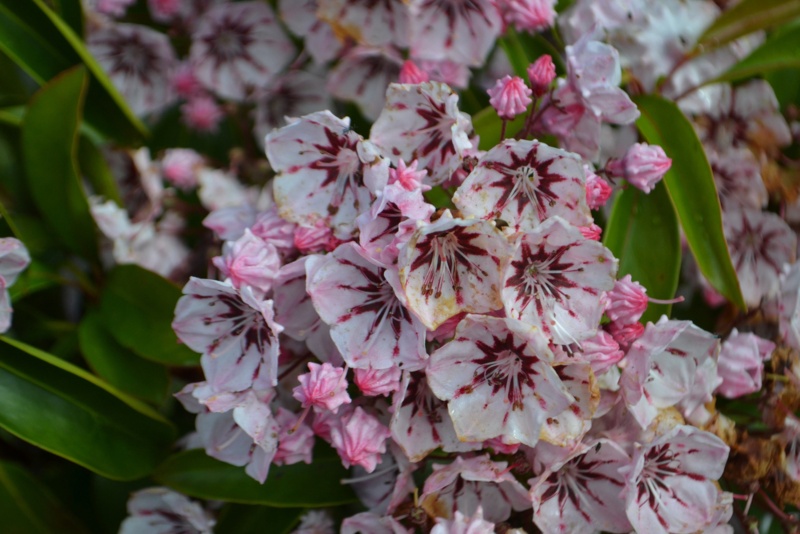
‘Peppermint’ has white flowers with maroon stripes radiating out to the edges of the flower. The stripes have fuzzy edges that are a bit reminiscent of tie-dye. The blossoms attract bees and are framed by smooth, glossy green leaves. It can grow to 10 feet tall and wide, and it needs moist, acidic soil.
5. K. latifolia ‘Tinkerbell’
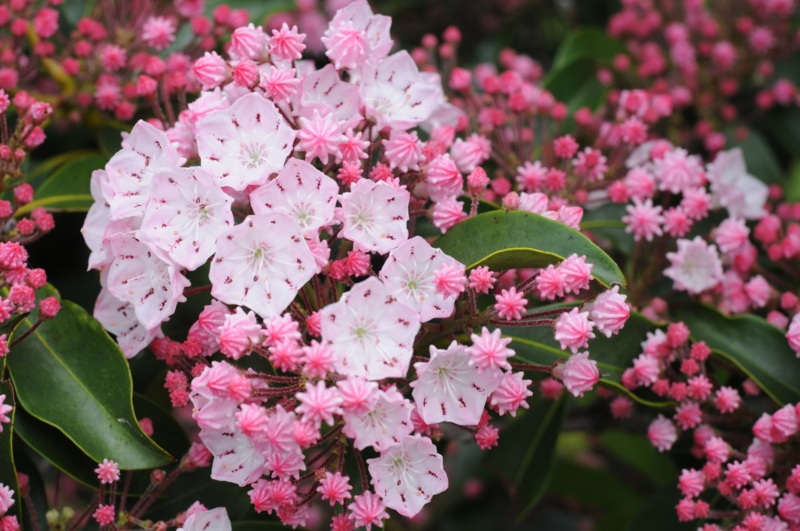
‘Tinkerbell’ is a cute, 3-foot version of mountain laurel with flowers that are darker pink on the outside and lighter pink on the inside. The edges of the flowers – mountain laurel flowers are of a type called fused, where the flower looks like one cuplike petal – tend to have a bit of a ruffled look to them. It needs average water and acidic soil, and it blooms profusely.
6. K. latifolia ‘Snowdrift’
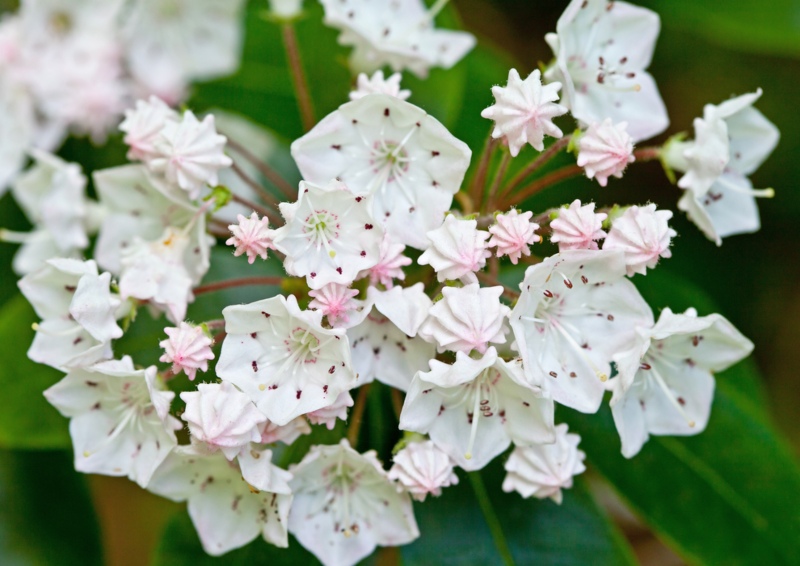
‘Snowdrift’ blossoms are, as you can guess from the name, white. It can handle both deep shade and full sun and is best for zones 5-8, although some sources say it will grow well in zone 9. It will grow to about 5 feet tall.
7. K. latifolia ‘Carousel’
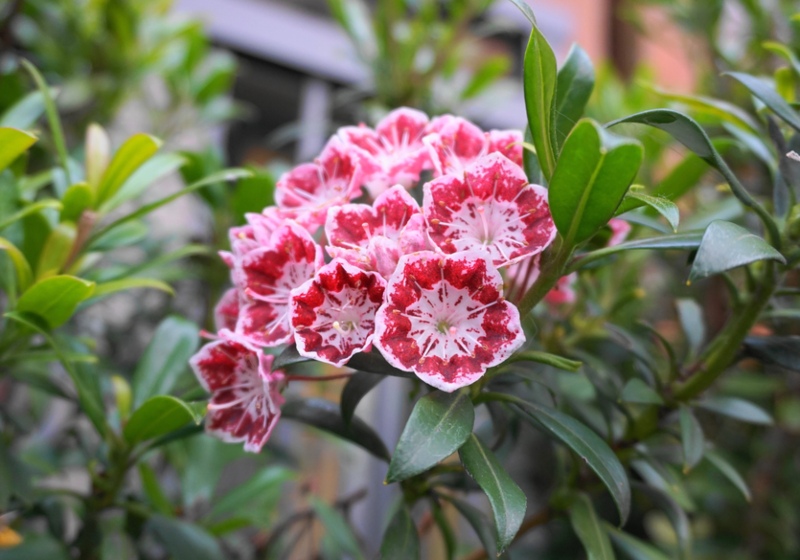
Wide white flowers with magenta lines, bands, and stippling (dot-like patterns) provide interesting color on this 8-foot-tall cultivar. It needs partial sun and a lot of water. The large leaves provide shelter for birds.
8. Texas mountain laurel (Sophora secundiflora)
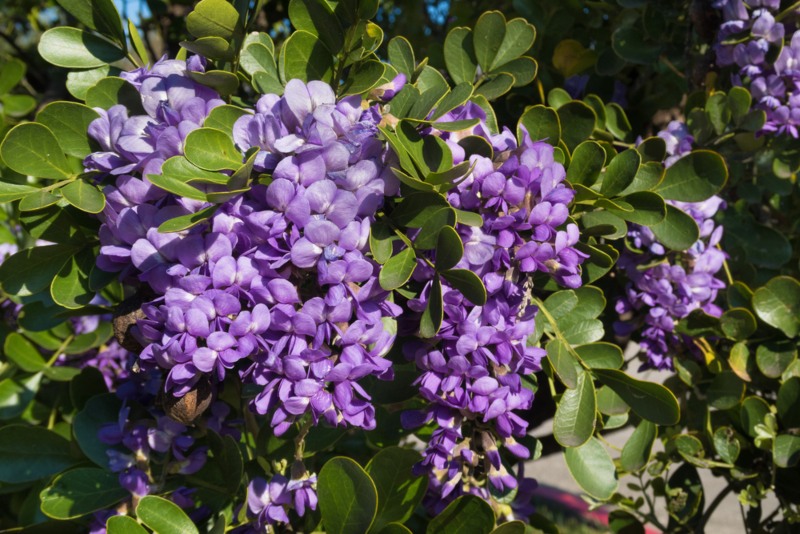
Texas mountain laurel is a member of the pea family. It’s a shrub that usually grows to about 15 feet, although it can get as tall as 30 feet and look like a small tree. Bluish-purple flowers grow in long, droopy columns – think wisteria – and give way to seed pods that produce toxic, hallucinogenic seeds. The flowers are strongly scented, and the fragrance is often described as “artificial grape,” as you’d smell when chewing grape-flavored bubblegum, for example. The plant does very well in limestone and rocky soil, but the soil does need to be very well-draining. If you live in central or western Texas and can keep kids and pets away from the seeds, this is a good deer- and drought-tolerant shrub to grow. You will have to look out for moth larvae eating the leaves.




